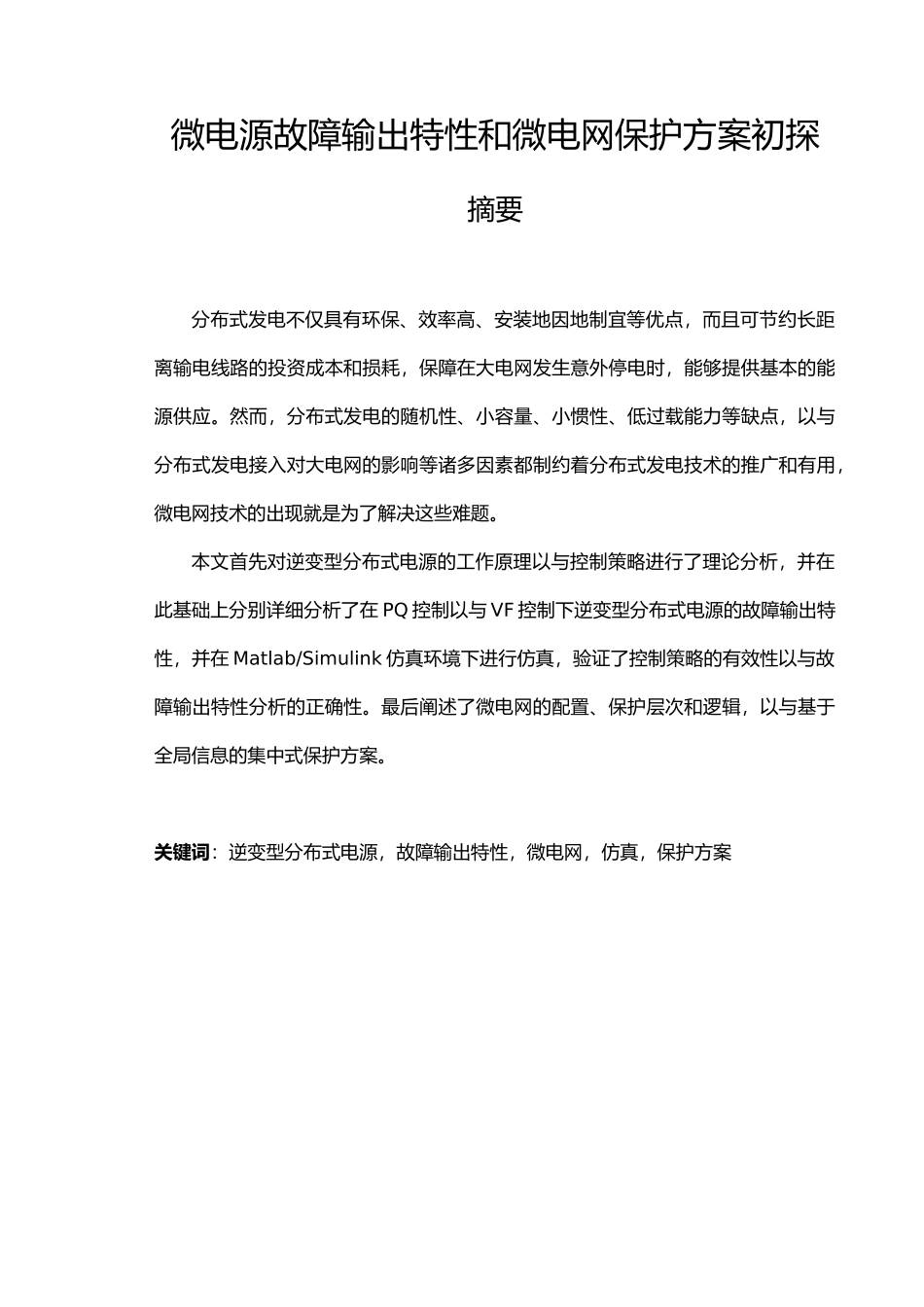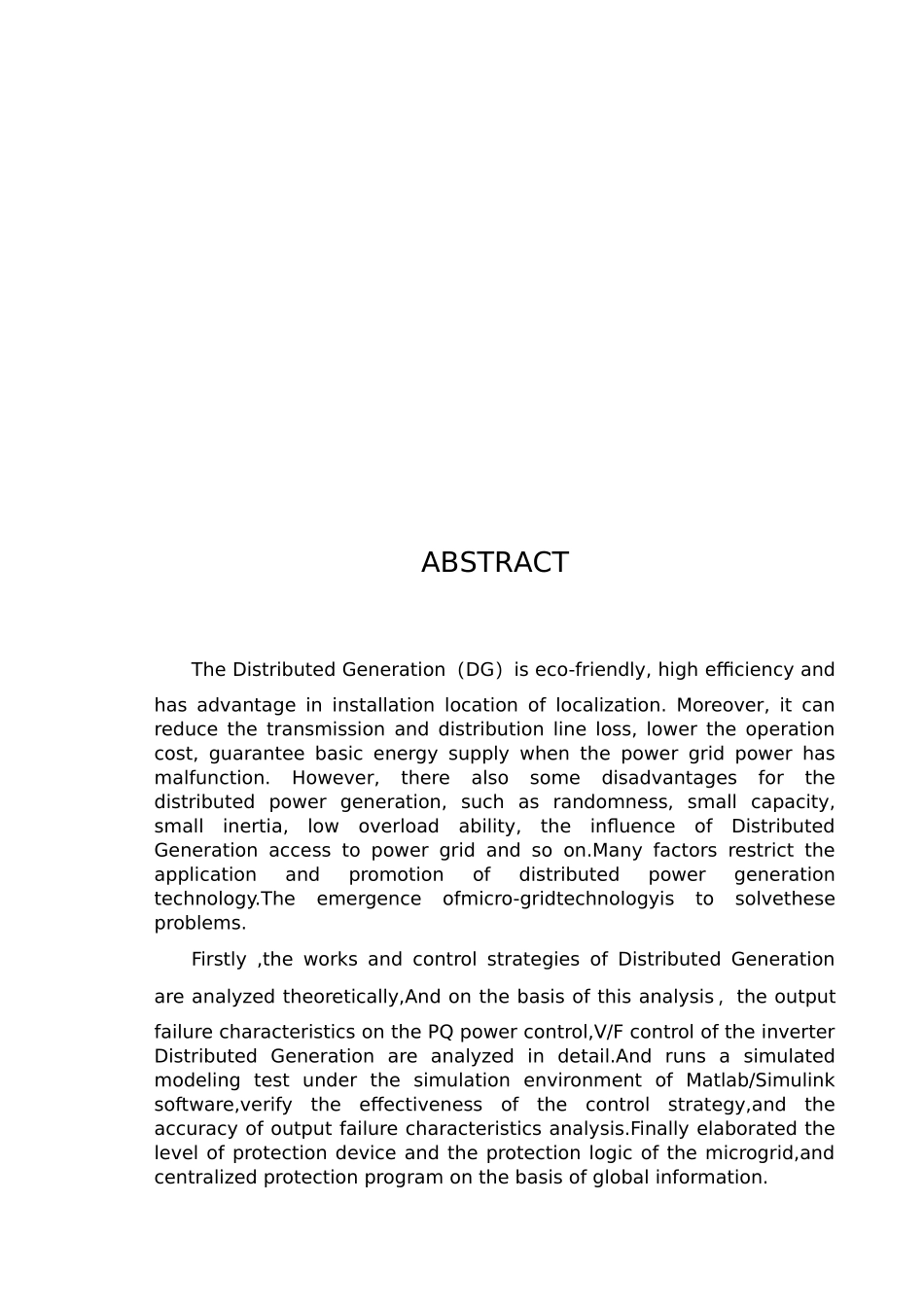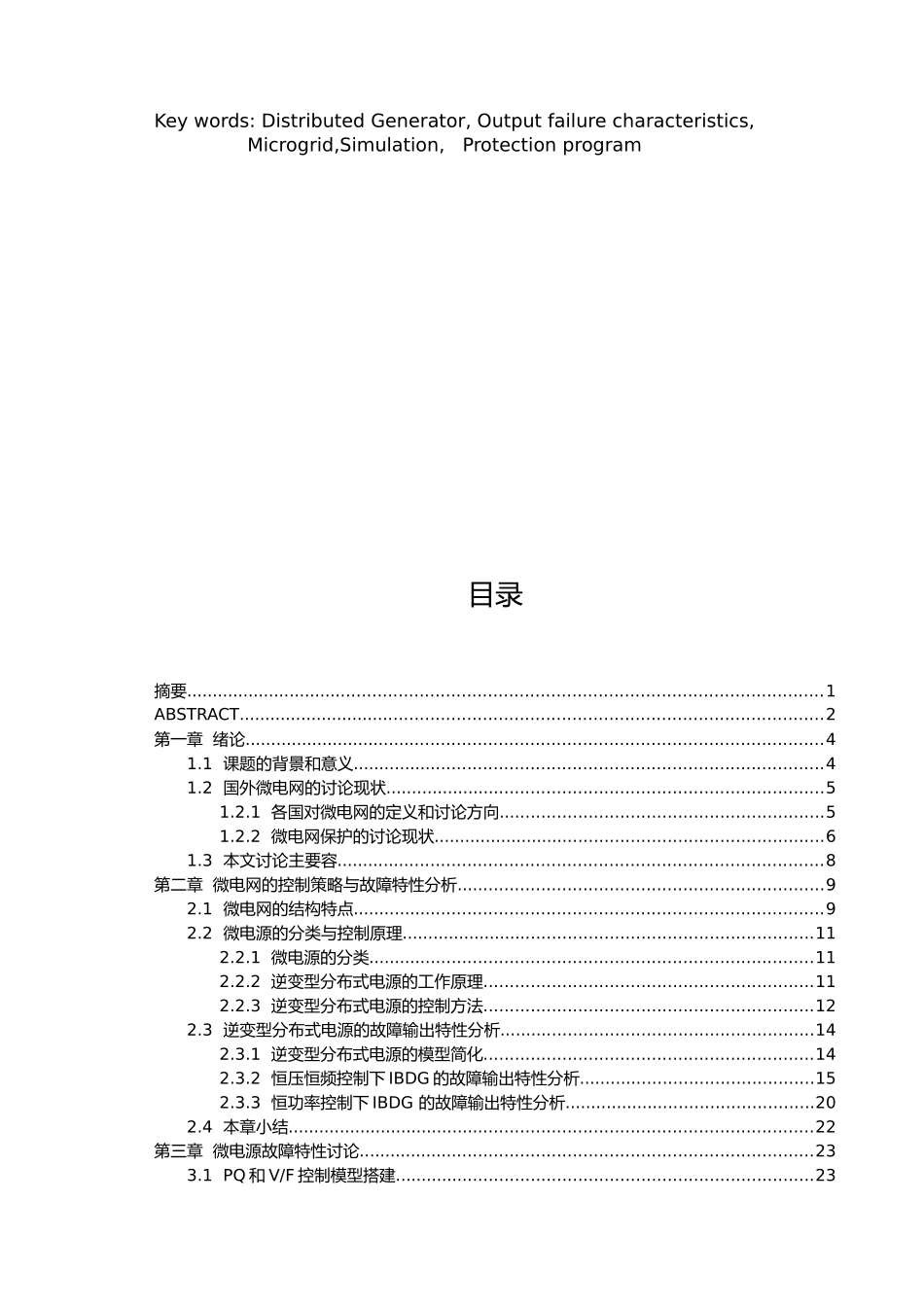微电源故障输出特性和微电网保护方案初探摘要分布式发电不仅具有环保、效率高、安装地因地制宜等优点,而且可节约长距离输电线路的投资成本和损耗,保障在大电网发生意外停电时,能够提供基本的能源供应。然而,分布式发电的随机性、小容量、小惯性、低过载能力等缺点,以与分布式发电接入对大电网的影响等诸多因素都制约着分布式发电技术的推广和有用,微电网技术的出现就是为了解决这些难题。本文首先对逆变型分布式电源的工作原理以与控制策略进行了理论分析,并在此基础上分别详细分析了在 PQ 控制以与 VF 控制下逆变型分布式电源的故障输出特性,并在 Matlab/Simulink 仿真环境下进行仿真,验证了控制策略的有效性以与故障输出特性分析的正确性。最后阐述了微电网的配置、保护层次和逻辑,以与基于全局信息的集中式保护方案。关键词:逆变型分布式电源,故障输出特性,微电网,仿真,保护方案ABSTRACTThe Distributed Generation(DG)is eco-friendly, high efficiency and has advantage in installation location of localization. Moreover, it can reduce the transmission and distribution line loss, lower the operation cost, guarantee basic energy supply when the power grid power has malfunction. However, there also some disadvantages for the distributed power generation, such as randomness, small capacity, small inertia, low overload ability, the influence of Distributed Generation access to power grid and so on.Many factors restrict the application and promotion of distributed power generation technology.The emergence ofmicro-gridtechnologyis to solvethese problems.Firstly ,the works and control strategies of Distributed Generation are analyzed theoretically,And on the basis of this analysis,the output failure characteristics on the PQ power control,V/F control of the inverter Distributed Generation are analyzed in detail.And runs a simulated modeling test under the simulation environment of Matlab/Simulink software,verify the effectiveness of the control strategy,and the accuracy of ...


